
Agar-agar is a gel-forming ingredient that is mixed with a nutritional ingredient and water to create a 2D medium for your mycelium to grow on. There are many different ingredients that can be used as nutrition in agar; some of the most common recipes include Malt Extract, Potato/Honey, or even dry dog food.
Since the mycelium is unable to digest the gel formed by the agar-agar, the mycelium will grow on top of the gel while taking up the nutrients that are stored within it. This characteristic makes agar plates very useful in mushroom cultivation.
Agar plates can be used to germinate spores from a Multispore Syringe, clean up a dirty liquid culture, clone mushrooms from living tissue, and propagate specific lines you’ve isolated. They also serve as a short-term storage solution, since you can store mycelium on agar plates in the fridge for months. For a long-term storage solution, you can use your agar to make agar slants.
An agar slant is agar cooled in a test tube at an angle, providing a sloped surface for the mycelium to grow on. The small amount of air in the tube and the narrow opening combine to reduce the chances of your agar drying out or becoming contaminated over time. Agar slants have been known to contain viable mycelium even after years of storage in a fridge.
Now let's dive into how to make agar at home...
Before you start making agar, you want to plan on creating a clean area to pour the agar. After sterilization, it is extremely important to maintain sterility to avoid contamination. Contamination occurs when bacteria, molds, or other microorganisms come into contact with your agar and use the available nutrition to grow and multiply.
The presence of contamination on your plates will make it very difficult to move your mycelium onto grains or into Liquid Culture. Contaminants can be transferred to your agar either by touching it directly with a dirty tool or by floating in the air and settling on your plate.
To avoid directly transferring contaminants onto your agar make sure to wash your hands before doing any sterile work and clean any tools that will come into contact with your agar. This won’t be a problem while pouring, however, once you start transferring mycelium from plate to plate it will be important.
An easy way to quickly sterilize a tool, such as a scalpel or syringe tip, is to heat it over a flame until it becomes red hot. You can also clean tools using 70% Ethanol or 70% Isopropanol, but be careful using these solutions around any flame.
Avoiding contaminants from the air is harder to do than just cleaning tools. When trying to overcome this problem, the main goal is to prevent microorganisms in the air from coming into contact with your agar. Three ways to minimize contamination are working in a Still Air Box (SAB), pouring around a bunsen burner, or in front of a laminar flow hood.
A SAB creates an area you can work in that minimizes the amount of air moving around your workspace, a bunsen burner uses the updraft of the flame to create a small sterile area under the flame, and a laminar flow hood uses a fan and HEPA filter to clean the air before blowing it over your workspace.
Below are two agar recipes that I have had success with. Keep in mind that there are many other recipes out there, but any recipe will work with this protocol. All recipes can be scaled up or down depending on the volume you need, and each plate should be filled with 20-25mL of agar.
| Water | 1000 mL | 250 mL |
| Agar Agar | 20 g | 5 g |
| Light Malt Extract | 20 g | 5 g |
| # of Plates | ~40 | ~10 |
| Water | 1000 mL | 250 mL |
| Agar Agar | 20 g | 5 g |
| Instant potato flakes | 10 g | 2.5 g |
| Honey | 20 g | 5 g |
| # of Plates | ~40 | ~10 |
1. Add dry ingredients to the bottle.
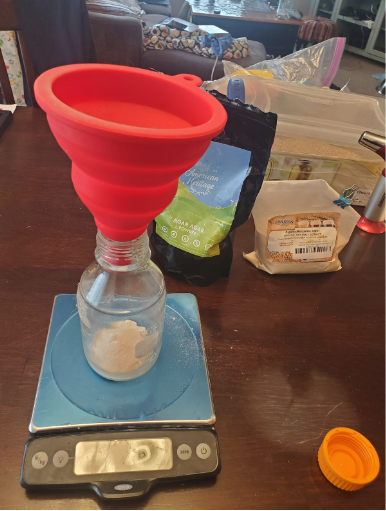
2. Add the water to the bottle.
3. Close the bottle and swirl to mix ingredients.
4. Cover cap with aluminum foil.

5. Open the lid of the bottle a quarter turn to let air escape during sterilization.
6. Place the bottle in a pressure cooker making sure it is secure and will not fall over.
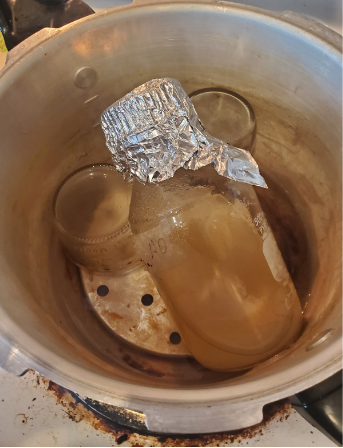

7. Pressure cook at 15 psi for 30 minutes.
8. Let agar cool until it can be handled safely. Fully close the lid.
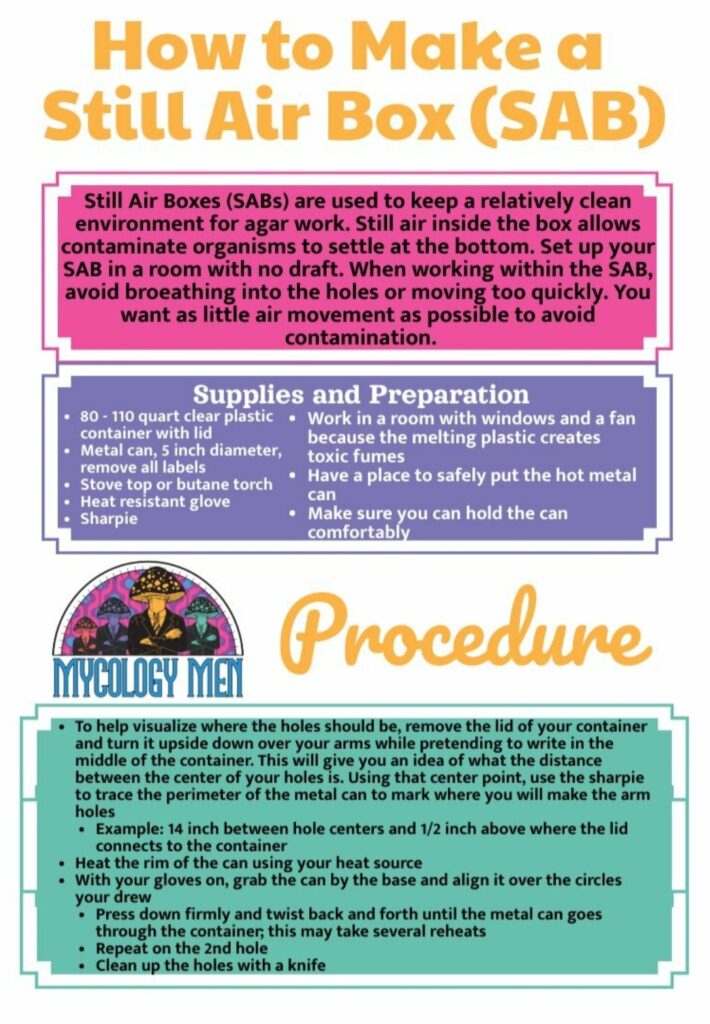
A SAB is a convenient and cheap way to create a relatively clean area to do agar work. It is made by cutting holes in a large storage container so you can stick your hands in and work within it. The idea behind a SAB is that if the air in the box is not moving, the organisms floating within the container will settle to the bottom.
After a few minutes, you will be able to work in clean air within the box. Keeping the air within the container as still as possible is the most important thing when using a SAB. When choosing where you are going to work, make sure it is not a drafty area and turn off any fans running in the room.
Besides setting up in a draft free area, the most important thing to focus on is minimizing the effect you have on the still air. Your breathing can cause air to flow into the SAB, so avoid breathing directly into the holes and wear a mask, if possible.
Moving your hands within the SAB will cause air movement and may bring in some outside air; move slowly and deliberately while working. Also be aware not to move your arms or hands directly above any open agar or grains.
We are constantly shedding contaminants from our skin that may drop down and settle on your plate. Being aware of your movements while working is an important skill to develop in any aseptic technique.
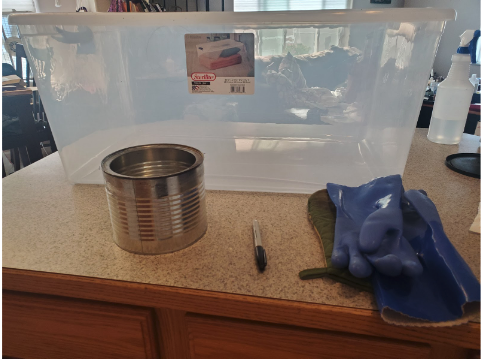
First, you must prepare to safely make the arm holes. You will have a very hot metal can, so you must be able to comfortably hold it and move it with the gloves you are using. Ensure you also have a place to let the container cool.
Putting it in a sink or laying it on some towels are some options that have worked for me. The melting plastic from making the holes will create toxic fumes, so I recommend opening windows and turning on nearby fans to get some air flowing.
Before heating anything up, you should mark where the arm holes will go. You will need to comfortably put both of your arms in the SAB and manipulate items near the center of the work space. To help visualize where the holes should be, remove the lid of your container and turn it upside down over your arms while pretending to write in the middle of the container.
This will give you an idea of what the distance between the center of your holes is. Using that center point, trace the perimeter of the metal can to mark where you will make the arm holes. I made my SAB with 9” between the edges of the holes and 1/2” above where the lid meets the container.
1. Once your holes are marked, set your container on a table with the marked holes facing up.

2. Heat up the rim of the can.
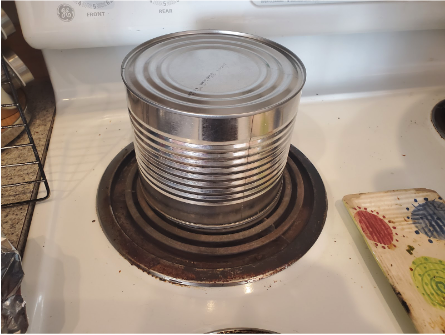
3. Once hot enough, use your gloves to grab the can from the base. Place the rim over your marked holes.
4. Gently push down on the can and slightly twist back and forth until it goes through the wall of the container. (You might have to reheat the can multiple times and repeat this process until it’s fully through.)

5. Pull the can out of the container and set down on your cooling area.
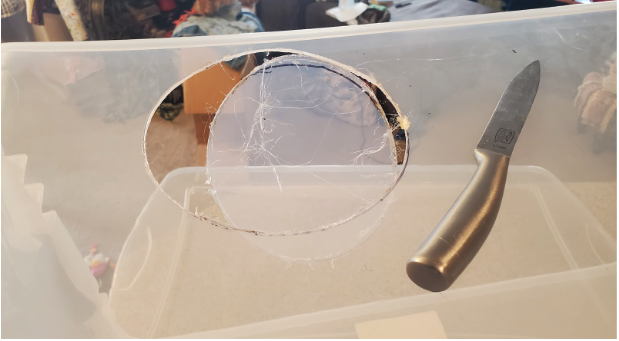
6. After cooling, remove any plastic that is stuck to the can and then repeat the process to make the second hole.

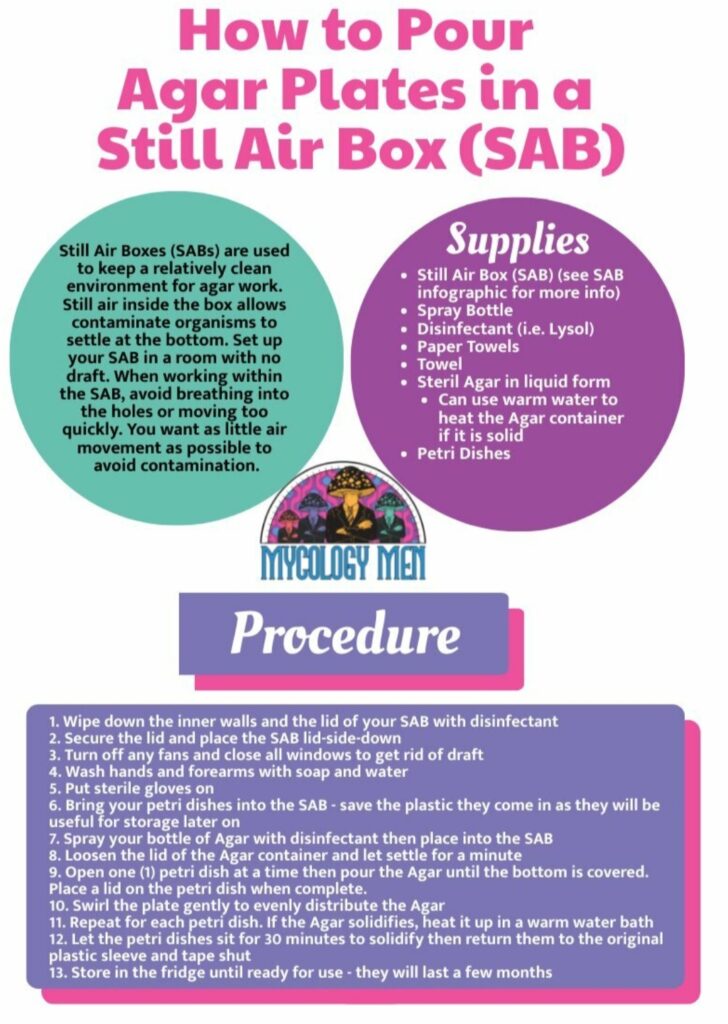

With a hot enough flame, a bunsen burner creates a sterile field about 12” around it. As the air is heated it rises and creates an updraft that pushes microorganisms floating around the flame upward and away from the area underneath it. As you're working under the flame, you will want to minimize any movements that disrupt these air currents.
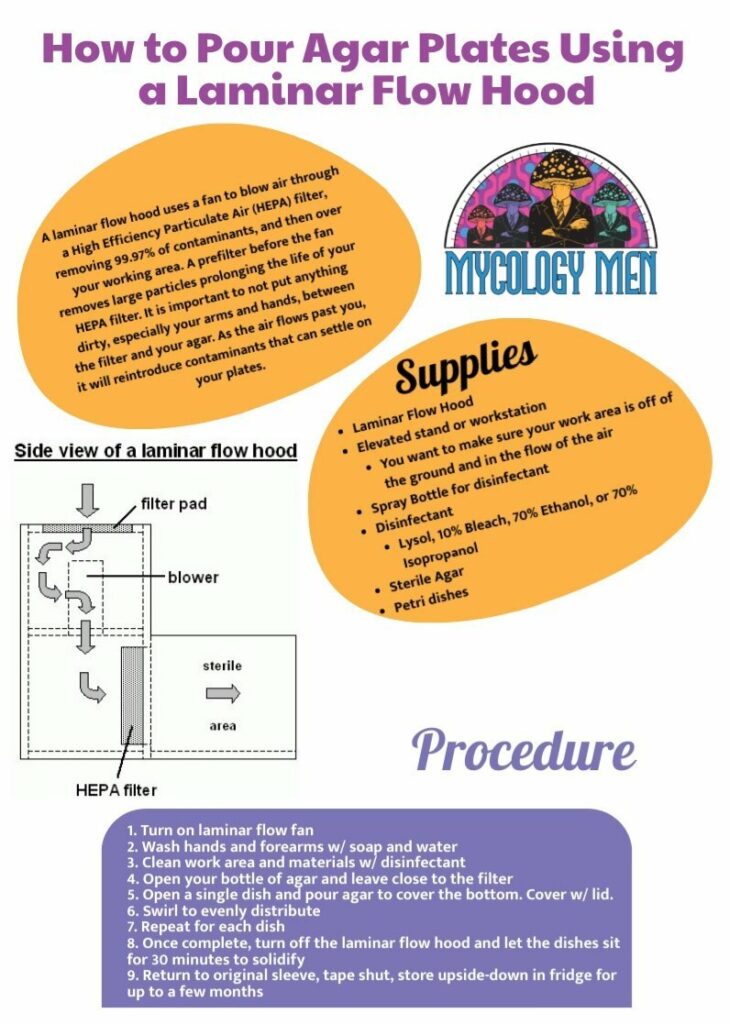
A laminar flow hood uses a fan to blow air through a High Efficiency Particulate Air (HEPA) filter, removing 99.97% of contaminants, and then over your working area. A prefilter before the fan removes large particles prolonging the life of your HEPA filter. It is important to not put anything dirty, especially your arms and hands, between the filter and your agar. As the air flows past you, it will reintroduce contaminants that can settle on your plates.
Eager to learn more about growing mushrooms? Make sure to check out our blog for more guides!